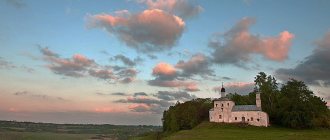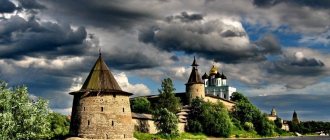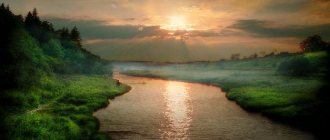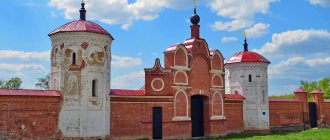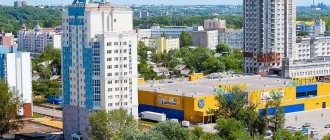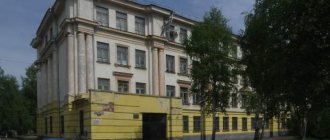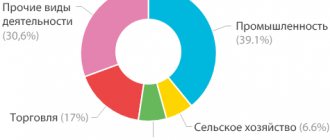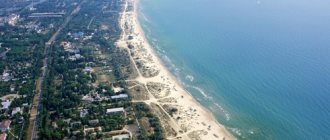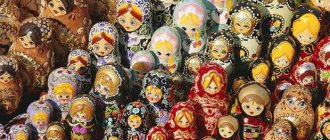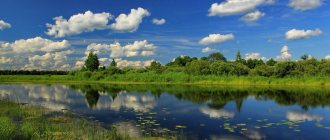Holiday calendar, signs, dates and events for every day of the year - folk calendar, Orthodox calendar, church calendar, eastern calendar, astrological calendar, lunar calendar, industrial calendar, as well as state and professional holidays, including significant World and International holidays and public holidays , folk holidays and omens, and other equally interesting and unusual holidays, dates and events of the year, zodiac signs, dream books and much more.
Calendar for 2022
| January | ||||||
| Mon | W | Wed | Thu | Fri | Sat | Sun |
| February | ||||||
| Mon | W | Wed | Thu | Fri | Sat | Sun |
| March | ||||||
| Mon | W | Wed | Thu | Fri | Sat | Sun |
| April | ||||||
| Mon | W | Wed | Thu | Fri | Sat | Sun |
| May | ||||||
| Mon | W | Wed | Thu | Fri | Sat | Sun |
| 1 | ||||||
| 2 | 3 | 4 | 5 | 6 | 7 | 8 |
| 9 | 10 | 11 | 12 | 13 | 14 | 15 |
| 16 | 17 | 18 | 19 | 20 | 21 | 22 |
| 23 | 24 | 25 | 26 | 27 | 28 | 29 |
| 30 | 31 | |||||
| June | ||||||
| Mon | W | Wed | Thu | Fri | Sat | Sun |
| 1 | 2 | 3 | 4 | 5 | ||
| 6 | 7 | 8 | 9 | 10 | 11 | 12 |
| 13 | 14 | 15 | 16 | 17 | 18 | 19 |
| 20 | 21 | 22 | 23 | 24 | 25 | 26 |
| 27 | 28 | 29 | 30 | |||
| July | ||||||
| Mon | W | Wed | Thu | Fri | Sat | Sun |
| 1 | 2 | 3 | ||||
| 4 | 5 | 6 | 7 | 8 | 9 | 10 |
| 11 | 12 | 13 | 14 | 15 | 16 | 17 |
| 18 | 19 | 20 | 21 | 22 | 23 | 24 |
| 25 | 26 | 27 | 28 | 29 | 30 | 31 |
| August | ||||||
| Mon | W | Wed | Thu | Fri | Sat | Sun |
| 1 | 2 | 3 | 4 | 5 | 6 | 7 |
| 8 | 9 | 10 | 11 | 12 | 13 | 14 |
| 15 | 16 | 17 | 18 | 19 | 20 | 21 |
| 22 | 23 | 24 | 25 | 26 | 27 | 28 |
| 29 | 30 | 31 | ||||
| September | ||||||
| Mon | W | Wed | Thu | Fri | Sat | Sun |
| 1 | 2 | 3 | 4 | |||
| 5 | 6 | 7 | 8 | 9 | 10 | 11 |
| 12 | 13 | 14 | 15 | 16 | 17 | 18 |
| 19 | 20 | 21 | 22 | 23 | 24 | 25 |
| 26 | 27 | 28 | 29 | 30 | ||
| October | ||||||
| Mon | W | Wed | Thu | Fri | Sat | Sun |
| 1 | 2 | |||||
| 3 | 4 | 5 | 6 | 7 | 8 | 9 |
| 10 | 11 | 12 | 13 | 14 | 15 | 16 |
| 17 | 18 | 19 | 20 | 21 | 22 | 23 |
| 24 | 25 | 26 | 27 | 28 | 29 | 30 |
| 31 | ||||||
| November | ||||||
| Mon | W | Wed | Thu | Fri | Sat | Sun |
| 1 | 2 | 3 | 4 | 5 | 6 | |
| 7 | 8 | 9 | 10 | 11 | 12 | 13 |
| 14 | 15 | 16 | 17 | 18 | 19 | 20 |
| 21 | 22 | 23 | 24 | 25 | 26 | 27 |
| 28 | 29 | 30 | ||||
| December | ||||||
| Mon | W | Wed | Thu | Fri | Sat | Sun |
| 1 | 2 | 3 | 4 | |||
| 5 | 6 | 7 | 8 | 9 | 10 | 11 |
| 12 | 13 | 14 | 15 | 16 | 17 | 18 |
| 19 | 20 | 21 | 22 | 23 | 24 | 25 |
| 26 | 27 | 28 | 29 | 30 | ||
Designations in the calendar: X - holidays; X—weekends; X - reduced working day by 1 hour;
Vologda Region
The Vologda region borders on eight subjects of the Russian Federation: the Arkhangelsk region in the north, the Kirov region in the east, the Kostroma and Yaroslavl regions in the south, the Tver and Novgorod regions in the southwest, the Leningrad region in the west, and the Republic of Karelia in the north. west. The greatest length from north to south is 385 km (average - 250 km), and from west to east - about 650 km.
The Vologda region is located in the northeast of the East European Plain, the relief here is hilly - lowlands (Prionezhskaya, Mologo-Sheksninskaya), ridges (Andogskaya, Belozerskaya, Kirillovskaya) and hills (Andomaskaya, Vepsovskaya, Vologda, Galichskaya, Verkhnevazhskaya) alternate. The height of the region above sea level is 150-200 meters. The surface is a low-lying plain with many lakes, swamps, rivers and numerous low ridges and hills. On the territory of the region there is a watershed of Eurasia between the basins of the Arctic and Atlantic oceans and the inland drainage basin (Caspian Sea). In the southeast of the region - Northern Uvaly.
The vegetation is typical of the middle and southern taiga. In the northern part of the region, podzolic soils predominate, in the southern part - soddy-podzolic soils, and swamp soils are found in places. Forests occupy about 75% of the region’s territory (80% in the northwest and southeast, and up to 50% in the central part). More than half of the forests are coniferous, mainly spruce forests. The most common forest species are Norway spruce and Siberian spruce, as well as their hybrid - Finnish spruce, with Scots pine in second place. Siberian fir is found in the eastern part of the region, and Sukachev larch (Russian, a subspecies of Siberian larch) is found mainly in the eastern and northern parts. Warty birch, downy birch and aspen are widespread, often forming secondary forests. Gray alder and black alder are somewhat less common. In areas with fertile soils, mainly in the undergrowth, less often in the second and first tiers of the tree stand, small-leaved linden, smooth elm, rough elm sometimes grow, in the west of the region Norway maple is added, and in the southwest - English oak, common ash and hazel ordinary. The fauna is typical for the taiga: elk, brown bear, wild boar, wolverine, mountain hare, pine marten, badger, wolf, fox; birds - capercaillie, partridge, black grouse, hazel grouse. The rivers and lakes are home to salmon, nelma, bream, pike perch, perch, pike, etc. Nature is protected in the Russian North National Park, the Darwin Nature Reserve and other 198 specially protected natural areas.
The Red Book of the Russian Federation includes 10 species of flowering plants, 2 of higher spore plants, 6 of fungi, 4 of lichens growing in the region.
In the region, 44 species of animals are registered, listed in the Red Book of the Russian Federation, including: mollusks - 1 species, insects - 7 species, bony fish - 7 species, birds - 27 species, mammals - 2 species. Of the animals living in the region, the following are listed in the Red Book of Russia: osprey, golden eagle, white-tailed eagle, peregrine falcon; Kubensky nelma, lake trout, common sculpin, river lamprey.
Holiday calendar, dates and events for every day of the year
All state and professional holidays of Russia, including significant World and International holidays, and other equally interesting holidays, dates and events of the year... Holiday calendar for every day; Russian production calendar with holidays.
• What holiday is today and tomorrow, dates and events...
Things to do in the region in winter
Fairytale city Veliky Ustyug
Photo: cad_wizard / shutterstock.com
If you are traveling with children in winter, Veliky Ustyug is perhaps the best option for a short trip on New Year’s Eve: since 1999, the “Homeland of Father Frost” project has been implemented here. Here you can not only chat with fairy-tale characters of Russian folklore, but also enjoy all the delights of a winter holiday: ride in a team drawn by horses with bells, ride a sled or cheesecake down a hill, ride a snowmobile, see ice sculptures and chat with northern animals in a small zoo.
You can stay in the Votchina itself - in the guest houses. In the city itself, on Christmas Eve and Christmastide, mummers walk the streets, and local residents flock to the skating rink even at -40°C: the main thing is to dress warmly.
Themed New Year's fun is not the only thing that attracts tourists to Veliky Ustyug. For example, 28 churches of the 17th-18th centuries have been preserved in the city (this despite the fact that now only 31 thousand Ustyug residents live in it), there has never been a Lenin Street, and it is also prohibited to build standard high-rise buildings in Ustyug. For antiquities, go to the temple complex of five churches, the Cathedral Court, the “gingerbread” church of Simeon the Stylite, and the Trinity-Gledensky Monastery, famous for its impressive iconostasis, which took craftsmen and artists eight years to create.
Veliky Ustyug is also famous for its crafts: here you can buy souvenirs made from birch bark (as well as take a tour of the factory and make something yourself), and blackened silver products are also made here.
Snow-White Totma
Totma is another ancient town in the Vologda region. It is included in the list of 40 especially valuable historical cities in Russia, which have preserved both the layout and most of the ancient buildings.
The calling card of Totma is its buildings in the “Totma Baroque” style, which look especially good in winter. It is worth visiting the Churches of the Entrance to Jerusalem (currently it is not operational, there is a museum of sailors inside), the Trinity in Zelenskaya Sloboda, the Nativity of Christ, the Resurrection in Varnitsy and the Assumption. There are also several examples of provincial classicism in the city - the Epiphany Cathedral and the Ascension Cathedral of the Spaso-Sumorin Monastery.
Architectural and Ethnographic Museum "Semenkovo"
A place that transports you to the atmosphere of a northern village of the late 19th - early 20th centuries. Here you can see what kind of houses the peasants lived in, how they lived their lives, how they earned their living, and also take part in recreating some of the rituals of the northern peoples. Today, the Semyonkovo ensemble includes two religious buildings, an estate, 12 houses, 17 utility blocks (barns, glaciers, baths, etc.).
Photo: hina / shutterstock.com
"Ancient Russian settlement Sugorye"
Another historical and ethnographic complex - “Sugorye” - recreates the life of the ancient Russians and Vikings. In ancient times, Sugorye was the name given to the hilly part of the Belozersk principality, located along the left bank of the Sheksna River. In the early Middle Ages, villages arose and developed here, where representatives of various Finno-Ugric and Slavic tribes lived together. Frequent guests in this region were the Scandinavian Vikings, who followed the Volga trade route “From the Varangians to the Arabs” for wealth and glory. The rich history of these lands inspired professional historians and reenactors to create a historical complex that allows tourists to get acquainted with the way of life of the population of medieval Belozerie, immerse themselves in the mysterious and majestic era of Ancient Rus' and take a real journey through time. On the territory of the settlement, the courtyard and estate of the appanage Sugorsky prince of the period of the 11th-12th centuries with two-story log mansions on the basement, a tower, and outbuildings was recreated, and the prince's warriors greeted the guests.
In this open-air museum, there are no exhibits under glass - you can touch everything, from an 11th-century battle ax to dishes and jewelry. In winter, here you can attend one of the thematic programs dedicated to the ancient traditions of calendar holidays, for example, the winter solstice “Yol-Karachun” or the celebration of Shiroka Maslenitsa.
Church calendar for every day
The church calendar is a time counting system used by the Orthodox Church to determine the sequence of church holidays and fasts in the annual cycle, as well as the corresponding services. Also the name of printed publications of various types, containing (in addition to general calendar functionality) elements of the monthly calendar and other materials of a liturgical and menological nature adapted to a specific year. The Church calendar contains two annual circles of events... Church calendar
Interesting places
The center of the region is the city of Vologda , and this is one of the oldest cities in Russia, founded in the 12th century . The city can be easily reached by rail, a huge number of passing trains pass through it, and there are plenty of good roads going past the city. There are many interesting architectural monuments, museums, and ancient churches located here. The most famous tourist spots in the city:
- Bishop's Court;
- Spaso-Prilutsky Monastery;
- Saint Sophia Cathedral;
- Resurrection Cathedral;
- Regional art gallery.
This list can be continued endlessly; there are so many interesting places that it would be impossible to visit them all in one trip.
This region is famous for its wooden architecture, wood carvings , and Vologda lace is known far beyond the country's borders. All this can be seen by visiting the Center for Folk Arts and Crafts “Carved Palisade”.
For lovers of historical monuments, museums and churches, I recommend visiting Cherepovets and Belozersk , where there are many buildings built in the 17th century and still standing today, despite the fact that they were built of wood.
I prefer more active holidays than sightseeing. And there is something to see and where to walk. In the summer you can go on a hike in the forest or raft on the river , fortunately here they are calm. Relax on the shore of the lake, very picturesque places on the shore of Lake Onega , and there the nature is already like in Karelia.
In spring and autumn it’s nice to wander through the forest, pick mushrooms and berries , fortunately there is a huge abundance of them in these parts. For nature lovers, there is always something interesting to do here.
Russian folk calendar for every day
Season: Winter - December, January, February.
Season: Spring - March, April, May.
Time of year: Summer - June, July, August.
Season: Autumn - September, October, November.
Murmansk region | Area 145 thousand square meters. km
The Murmansk region is in ninth place among the largest regions of the Russian state. It occupies an area of 145 thousand square meters. km. — 0.85% of the entire territory of the Russian Federation. The date of its formation is considered to be May 28, 1938. The territory of the subject is home to 762 thousand 173 people, which is a density of 5.26 people/sq. km. About 70% of the area is occupied by the Kola Peninsula. On the territory of the region there is the Baltic crystalline shield, which is a real mineralogical treasury, unparalleled in the world in terms of the diversity of minerals and minerals. Some of them are not found anywhere else.
Sverdlovsk region | Area 194 thousand sq. km
The Sverdlovsk region is one of the largest in Russia. Its lands are located on 194 thousand square meters. km, as a percentage of the country's area this is 1.14%. The subject is part of the Ural Federal District. Its foundation took place in 1732. The administrative center is the city of Yekaterinburg, which was previously called Sverdlovsk. More than 4 million people live here, which is 22.28 people/sq. km. This is one of the most densely populated regions of the state. On its territory there are deposits of gold, platinum, asbestos, bauxite, nickel, iron, manganese, chromium and copper. The largest chemical plant in the Russian Federation, Uralkhimplast, is located here.
Wonderful people
Atlasov V.V. is an explorer, born in the Vologda region. Batyushkov K.N. is a poet, born in the Vologda region. Belov V.I., writer, was born in the Vologda region. Belyaev P.I. - cosmonaut - was born in the Vologda region. Vereshchagin V.V. - artist - was born in the Vologda region. Dezhnev S.I. is an explorer, born in the Vologda region. Ilyushchin S.V. - aircraft designer - was born in the Vologda region. Rubtsov N.M. - poet - was born in the Vologda region. Tendryakov V.F., writer, was born in the Vologda region. Khabarov E.P. is an explorer, born in the Vologda region. Shalamov V.T., writer, was born in the Vologda region. Yashin A.Ya. - poet, born in the Vologda region.
Tomsk region | Area 314 thousand square meters. km
Among the largest regions of the Russian Federation, the Tomsk region ranks sixth. It accounts for 314 thousand square meters. km, which is 1.84% of the entire territory of the state. About 63% of the total area is occupied by taiga forests, and 29% is swamps. In terms of territory, the Tomsk region is slightly larger than Poland (310 thousand sq. km). The subject is part of the Siberian Federal District. The date of its formation is August 13, 1944. More than 1 million people live in the Tomsk region, which is a population density of 3.42 people/sq. km. As for natural resources, the territory is replete with them: there are about 100 oil fields, the largest reserves of coal, non-ferrous and ferrous metals, peat and natural gas.
Irkutsk region | Area 774 thousand sq. km
The Irkutsk region ranks second among the largest regions of Russia. The total territory occupied by the subject is approximately 774 thousand square meters. km, which is almost 5% of the entire area of the state. In terms of territory, it is almost equal to Turkey, whose area is 780 thousand square meters. km. The founding date of the region is considered to be September 26, 1937, when the East Siberian region of the RSFSR was divided into Irkutsk and Chita. As of 2016, about 2.5 million people live here, which in terms of density is 3.11 people/sq. km. The Irkutsk region is one of the main suppliers of petroleum products, timber, coal and aluminum.
Tyumen region | Area 1,464 thousand sq. km
Tyumen region is the largest region in Russia. The area of the subject is 1464 thousand square meters. km, which is equal to 9% of the entire territory of the Russian Federation. If we unite Germany, Italy, France and Great Britain, then the territory they occupy will be exactly equal to the Tyumen region. Its foundation took place in 1944 by separating some areas of the Kurgan and Omsk regions. The population as of 2016 is 3,615,485 people, density is 2.47 people/sq. km. Approximately 90% of the districts belong to the Far North. It is here that the main deposits of such minerals and natural resources as gas and oil are concentrated.
116 24
Novosibirsk region | Area 177 thousand square meters. km
The Novosibirsk region ranks eighth among the largest regions of the Russian Federation. The area it occupies is 177 thousand square meters. km, which is 1.4% of the entire territory of Russia. The region is home to about 2.7 million people, and the population density is 15.54% people/sq. km. The bulk of the population is Russian (93%), about 7% are Germans, Ukrainians and Tatars. The subject was formed in 1937, when the West Siberian Territory was divided into the Altai Territory and the Novosibirsk Region. More than 500 deposits of various natural resources of the country are located here.
Magadan region | Area 462 thousand sq. km
The Magadan region ranks fourth among the largest regions of Russia. An entity with a total area of 462 thousand square meters. km occupies 2.7% of the entire state. The founding date of the region is December 3, 1953. 146 thousand 345 people live on the territory of the subject, which is equal in density to 0.32 people/sq. km. The bulk of the population are Russians (72%) and Ukrainians (15%). The Magadan region completely belongs to the regions of the Far North, where permafrost reigns. On its territory there are large deposits of silver, gold, tin and tungsten. At the end of 2015, 979 tons of silver and 22 tons of gold were mined here.
